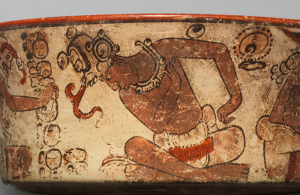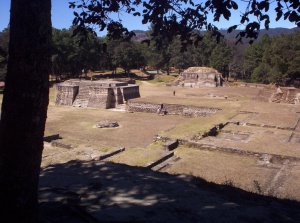(Boylove Documentary Sourcebook) - The Introduction and Practice of Sodomy among the Maya-Cakchikel People of Vera-Paz, as Depicted in a Passage from the 'Apologetic History of the Indies' by Bartolomé de las Casas: Difference between revisions
Added the page to the "Mayan mythology" category |
m Dandelion moved page (Boylove Documentary Sourcebook) - The Introduction and Practice of Sodomy among the Maya-Cakchikel of Vera-Paz, as Depicted in a Passage from the 'Apologetic History of the Indies' by Bartolomé de las Casas to (Boylove Documentary Sourcebook) - The Introduction and Practice of Sodomy among the Maya-Cakchikel People of Vera-Paz, as Depicted in a Passage from the 'Apologetic History of the Indies' by Bartolomé de las Casas |
||
| (2 intermediate revisions by the same user not shown) | |||
| Line 43: | Line 43: | ||
[[Category:Mayan mythology]] | [[Category:Mayan mythology]] | ||
[[Category:Spain]] | [[Category:Spain]] | ||
[[Category:Historical literature]] | |||
[[Category:Anthropological literature]] | [[Category:Anthropological literature]] | ||
[[Category:Sexuality]] | [[Category:Sexuality]] | ||
Latest revision as of 05:21, 4 November 2021

From The Pre-Columbian Mind by Francisco Guerra (London; New York: Seminar Press, 1971).
Note: Vera-Paz or Verapaz was a historical region in the Spanish colonial Captaincy General of Guatemala. It is currently divided into two departments, Alta Verapaz and Baja Verapaz.[1]
Las Casas wrote in 1542 a Brevisima relación de la destrucción de las Indias presented to Charles V in which he dismissed the charges of irrational behaviour and unnatural vices of the American Indians, particularly sodomy, and which was published in 1552, accusing in turn the Spanish colonizers of great cruelties. The reaction in Spain and abroad to las Casas’ Brief account was such that the Bishop decided to keep two major works, the Apologética Historia de las Indias and the Historia de las Indias, unpublished until after his death. In 1547 las Casas returned permanently to Spain, and took up residence at the convent of San Gregorio in Valladolid, where he kept rewriting his History of the Indies until his death in Madrid at the age of 92 years. This book was not printed until 1875, and the Apologetic History suffered a similar fate, remaining unpublished until 1909.
[...]
Apologética Historia, 1909 edition, p. 627, Chapter CCXXXIX
“. . . Concerning the abominable sin [sodomy] what must be truly said is that it was never found among those people [Maya-Cakchikel of Vera-Paz], on the contrary, it was always held [among them] as a great and nefarious sin until a demon appeared under the disguise of an Indian, named Cu, and in another language Chin, and in others Cavil and Maran, who induced them to commit it, as he himself executed it with another demon; from there it happened that some of them did not consider it sinful, saying that if that demon or god had committed it [sodomy] he had persuaded them that it was not a sin. Due to this fact some parents provided their youngsters with a boy to use him for a woman, and if someone else got at him he was ordered to pay for him in the same way as they did in respect of women, when some raped his neighbor’s wife. With all this corruption, if somebody forced some boy against his will, he was punished similarly to those who raped a woman, and what is more, all the old men and women reprimanded and reproached the youngsters who consented among themselves to those evil deeds, which were a great sin, advising them to abstain from it, because, those who consented to or committed such actions would die. Finally, there were always some among them who grumbled, reproached and abominated it [sodomy].”

References
See also
- Adult friend (dictionary)
- Age of attraction (dictionary)
- Boylove
- Ephebophilia
- Loved boy (dictionary)
- Minor-attracted person (dictionary)
- Pederasty
- Pedophilia
- Young friend (dictionary)